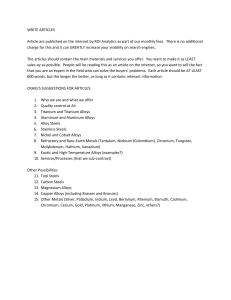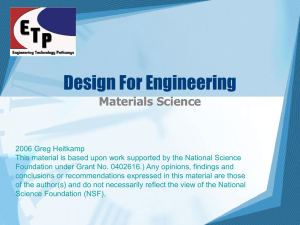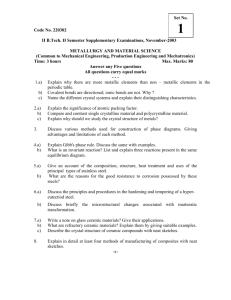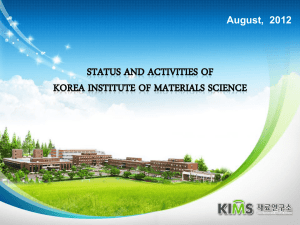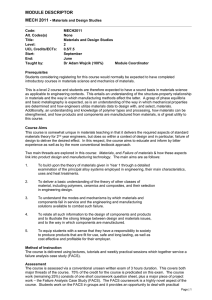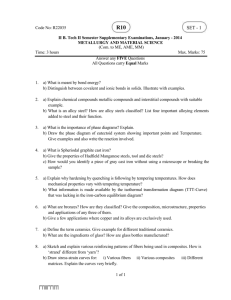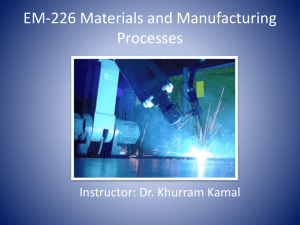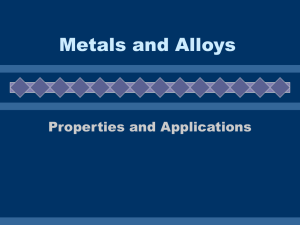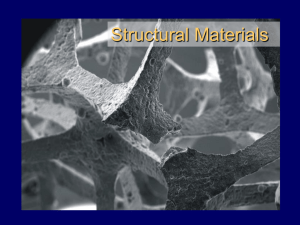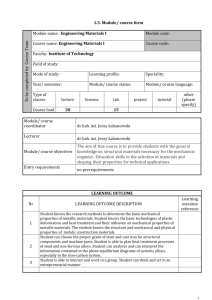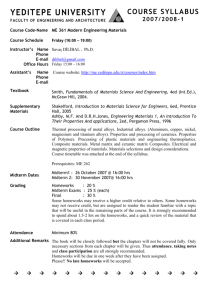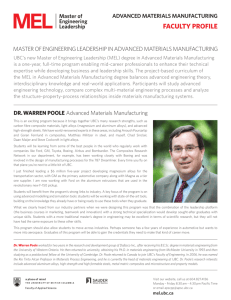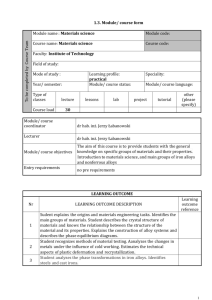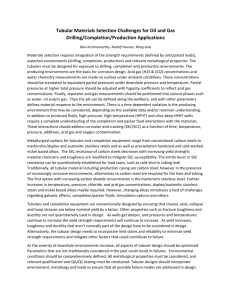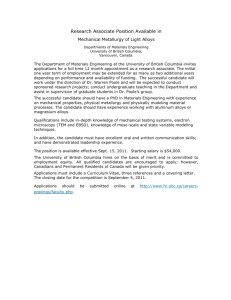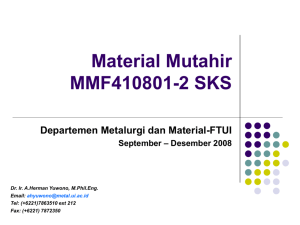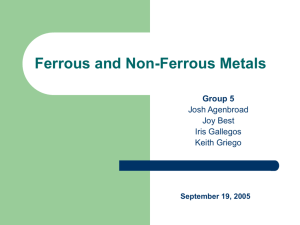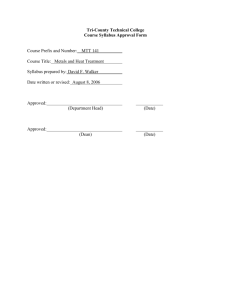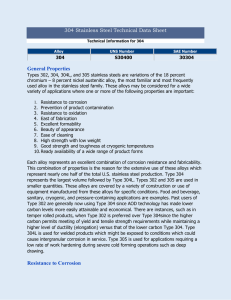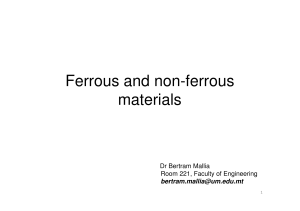ME-303 - Swami Vivekananda Institute of Science & Technology
advertisement
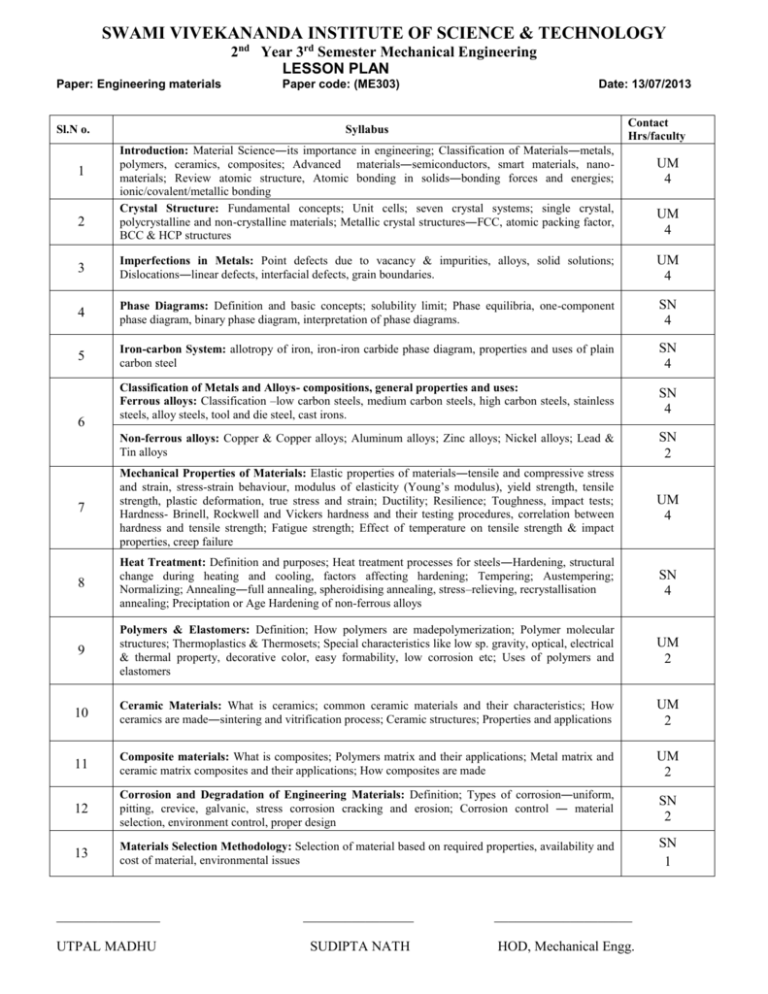
SWAMI VIVEKANANDA INSTITUTE OF SCIENCE & TECHNOLOGY 2nd Year 3rd Semester Mechanical Engineering LESSON PLAN Paper: Engineering materials Sl.N o. 1 2 Paper code: (ME303) Date: 13/07/2013 Contact Hrs/faculty Syllabus Introduction: Material Science―its importance in engineering; Classification of Materials―metals, polymers, ceramics, composites; Advanced materials―semiconductors, smart materials, nanomaterials; Review atomic structure, Atomic bonding in solids―bonding forces and energies; ionic/covalent/metallic bonding Crystal Structure: Fundamental concepts; Unit cells; seven crystal systems; single crystal, polycrystalline and non-crystalline materials; Metallic crystal structures―FCC, atomic packing factor, BCC & HCP structures UM 4 UM 4 3 Imperfections in Metals: Point defects due to vacancy & impurities, alloys, solid solutions; Dislocations―linear defects, interfacial defects, grain boundaries. UM 4 4 Phase Diagrams: Definition and basic concepts; solubility limit; Phase equilibria, one-component phase diagram, binary phase diagram, interpretation of phase diagrams. SN 4 5 Iron-carbon System: allotropy of iron, iron-iron carbide phase diagram, properties and uses of plain carbon steel SN 4 Classification of Metals and Alloys- compositions, general properties and uses: Ferrous alloys: Classification –low carbon steels, medium carbon steels, high carbon steels, stainless steels, alloy steels, tool and die steel, cast irons. SN 4 Non-ferrous alloys: Copper & Copper alloys; Aluminum alloys; Zinc alloys; Nickel alloys; Lead & Tin alloys SN 2 7 Mechanical Properties of Materials: Elastic properties of materials―tensile and compressive stress and strain, stress-strain behaviour, modulus of elasticity (Young’s modulus), yield strength, tensile strength, plastic deformation, true stress and strain; Ductility; Resilience; Toughness, impact tests; Hardness- Brinell, Rockwell and Vickers hardness and their testing procedures, correlation between hardness and tensile strength; Fatigue strength; Effect of temperature on tensile strength & impact properties, creep failure UM 4 8 Heat Treatment: Definition and purposes; Heat treatment processes for steels―Hardening, structural change during heating and cooling, factors affecting hardening; Tempering; Austempering; Normalizing; Annealing―full annealing, spheroidising annealing, stress–relieving, recrystallisation annealing; Preciptation or Age Hardening of non-ferrous alloys SN 4 9 Polymers & Elastomers: Definition; How polymers are madepolymerization; Polymer molecular structures; Thermoplastics & Thermosets; Special characteristics like low sp. gravity, optical, electrical & thermal property, decorative color, easy formability, low corrosion etc; Uses of polymers and elastomers UM 2 10 Ceramic Materials: What is ceramics; common ceramic materials and their characteristics; How ceramics are made―sintering and vitrification process; Ceramic structures; Properties and applications UM 2 11 Composite materials: What is composites; Polymers matrix and their applications; Metal matrix and ceramic matrix composites and their applications; How composites are made UM 2 12 Corrosion and Degradation of Engineering Materials: Definition; Types of corrosion―uniform, pitting, crevice, galvanic, stress corrosion cracking and erosion; Corrosion control ― material selection, environment control, proper design SN 2 13 Materials Selection Methodology: Selection of material based on required properties, availability and cost of material, environmental issues SN 1 6 _______________ ________________ ____________________ UTPAL MADHU SUDIPTA NATH HOD, Mechanical Engg.
